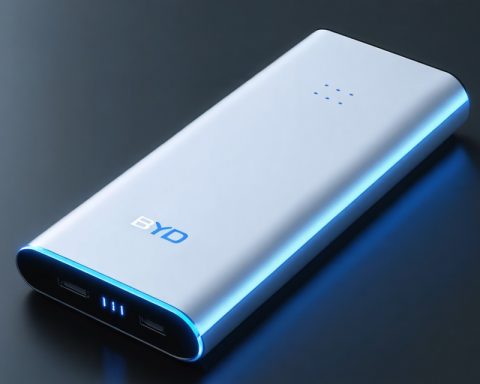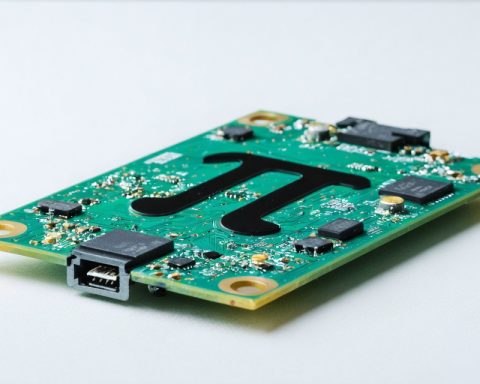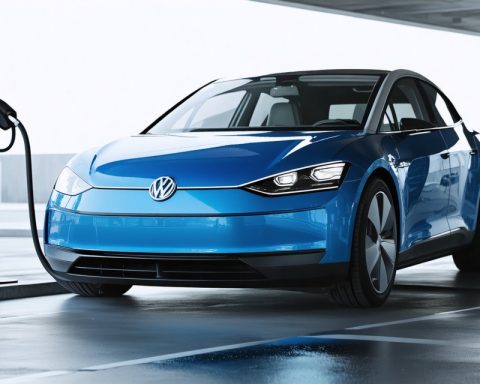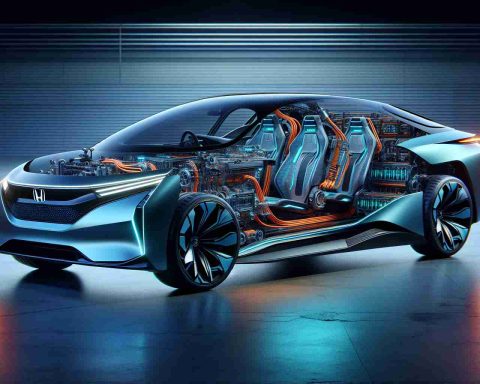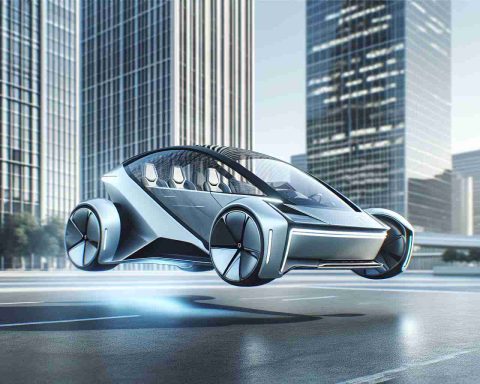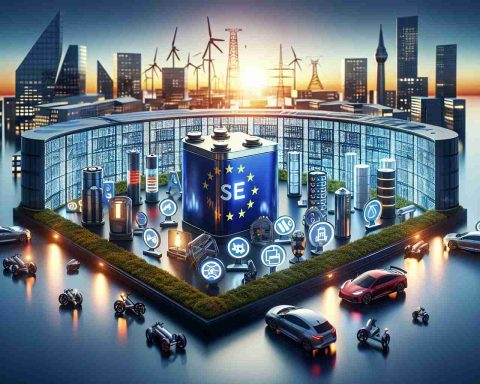- The federal government has paused funding for the National Electric Vehicle Infrastructure (NEVI) Formula Program, impacting America’s EV ambitions.
- This funding freeze affects plans for a nationwide EV charging network, leaving states and stakeholders in a state of uncertainty.
- The halt poses significant challenges to both public and private sectors, potentially slowing the momentum of EV adoption.
- The pause highlights the need for innovation and adaptation, with private companies possibly stepping in to invest in and bolster charging infrastructure.
- The situation urges a call to action, fostering creativity and determination to continue driving America’s EV infrastructure goals.
A sudden pause has gripped America’s electric vehicle ambitions. The federal government has slammed the brakes on funding for the National Electric Vehicle Infrastructure (NEVI) Formula Program. This unexpected decision raises questions about the future of the country’s burgeoning EV landscape.
Picture a nation crisscrossed with electric highways, humming with the quiet efficiency of battery-powered cars. The NEVI program was set to pave the way for such a future, its main goal to create a comprehensive charging network that could transform how Americans travel. However, the funding freeze means states and stakeholders are left on standby, plans and blueprints gathering dust, and hopes of accelerated progress fading.
The electric vehicle market, once charging ahead with vigor, now faces uncertainty. This halt poses a significant challenge to both the public and private sectors, testing their resolve in the face of evolving transportation needs. Many wonder if this will fuel skepticism over the viability of electric infrastructure, potentially slowing down adoption just as momentum was building.
Yet amid the setback, the urgency for innovation and adaptation is more pronounced than ever. Stakeholders may need to pivot, exploring alternative approaches to bolster the nation’s charging capabilities amid the funding hiatus. Private companies may play a pivotal role, stepping in with innovative solutions and investments to ensure the dream of a sustainable, electric future remains on track.
The key takeaway: while this funding freeze disrupts progress, it also ignites a call to action, urging creativity and determination to drive America’s EV infrastructure forward. The road might be bumpier now, but the destination remains unchanged.
Why America’s Electric Vehicle Future is Stalled and How It Can Get Back On Track
How-To Steps & Life Hacks
1. State and Local Initiatives: While federal funding is paused, local governments and communities can implement smaller-scale charging solutions. Installing chargers at public city locations or incentivizing businesses to add chargers can encourage adoption.
2. Home Charging Solutions: Consumers can invest in home charging stations. For those living in multi-unit dwellings, working with property managers to include shared EV chargers can make ownership more feasible.
3. Policy Advocacy: Engage in advocacy for policy changes that support EV infrastructure growth. This can include writing to local representatives or supporting initiatives that focus on sustainable transport solutions.
Real-World Use Cases
– Commercial Fleets: Companies with large fleets, such as delivery services, can transition to electric vehicles independently of federal incentives. Amazon, for example, has committed to deploying a fleet of all-electric delivery vehicles.
– Urban Centers: Cities like San Francisco and New York are leading the charge in EV adoption by investing in extensive charging networks and offering tax incentives to EV owners.
Market Forecasts & Industry Trends
According to Allied Market Research, the global electric vehicle charging infrastructure market is projected to reach $113 billion by 2030. Trends indicate significant growth in private investment, with companies focusing on rapid charging solutions and solar-powered charging stations.
Reviews & Comparisons
When evaluating EV charging stations, consider the following:
– Charging Speed: Options range from Level 1 (slow) to Level 3 (fast). Fast chargers are increasingly preferable for public spaces.
– Cost: Prices for home chargers vary, with Level 2 chargers typically ranging from $500 to $1500.
– Compatibility: Ensure the charger is compatible with your vehicle model and future-proof for next-gen cars.
Controversies & Limitations
A major concern is the sustainability of electric grids. Critics argue that increased demand for electricity may lead to higher emissions if not sourced from renewable energy. Furthermore, the mining of lithium and cobalt for batteries remains environmentally contentious.
Features, Specs & Pricing
– Features: Smart chargers with app integration for monitoring use and cost control are increasingly popular.
– Specs: Charging stations offer various power outputs, measured in kW, affecting how rapidly they can charge.
– Pricing: Installation cost can be significant; consider grants or rebates offered by local governments.
Security & Sustainability
Security involves protecting both the chargers from vandalism and the data transmission from the device back to the grid to prevent hacking. On the sustainability front, focus is shifting toward using sustainably sourced materials for station manufacturing and ensuring end-of-life recycling.
Insights & Predictions
The innovation in battery technology, including solid-state batteries, promises longer life and shorter charging times, which could revolutionize both the automotive and charging industries within the next decade.
Tutorials & Compatibility
For installing home chargers:
1. Ensure your home wiring can support the additional load.
2. Consult with an electrician to safely install the system.
3. Opt for smart chargers which can integrate with your home’s network for energy management.
Pros & Cons Overview
Pros:
– Reduced emissions with greener transportation.
– Cost savings on fuel over the vehicle’s lifetime.
– Lower maintenance costs compared to traditional vehicles.
Cons:
– Current range limitations of electric vehicles.
– Initial high costs for vehicle purchase and charger installation.
– Infrastructure not yet fully developed for long-range travel.
Conclusion and Actionable Recommendations
Despite the NEVI funding setback, there’s a clear path forward:
– Innovation in Funding: Encourage private sector investment and partnerships to bridge the gap left by federal funding halts.
– Adoption of Home Solutions: Promote home and small business installations of charging stations to ease public charger demand.
– Sustainable Strategies: Support the transition of electricity grids towards renewable sources to genuinely benefit from an EV future.
For more insights on electric vehicles and sustainable energy trends, visit Environmental Defense Fund.

